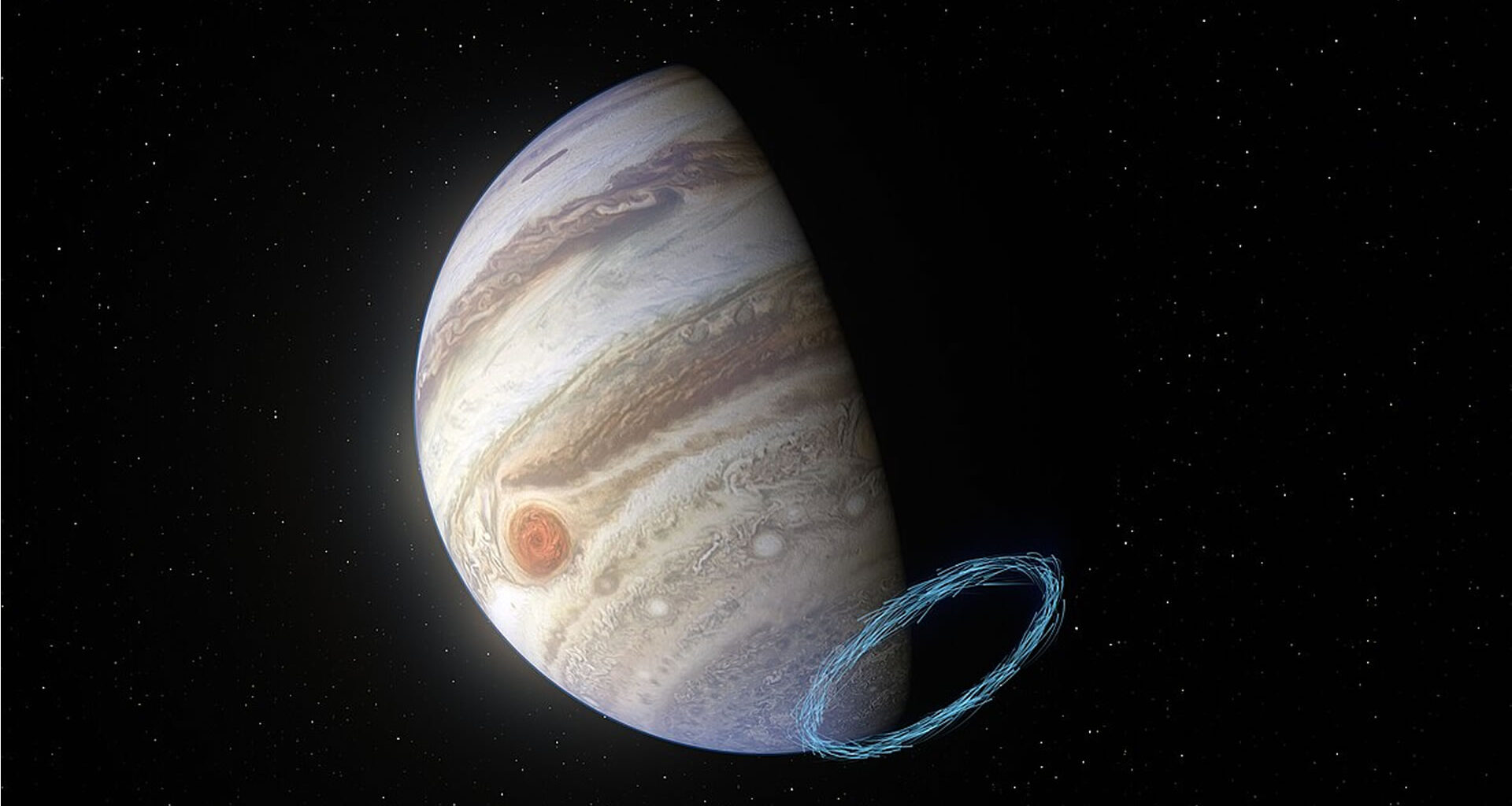Researchers from the Netherlands Research School of Astronomy have created a new model that, they believe, explains the extreme jet streams seen on large planets like Jupiter and Saturn.
All four of the giant planets (Jupiter, Saturn, Uranus, and Neptune) have super-fast jet streams at their equators. But they don’t all spin in the same direction.
Until now, it has not been entirely clear why some planets show Easterly winds while others have Westerly winds. The team found that separate explanations for different directions are not needed thanks to their new unified and elegant model.
Jupiter and Saturn, for example, have eastward (same direction as the planet’s rotation), while Uranus and Neptune exhibit the opposite direction.
For decades, scientists couldn’t explain why. All four have similar conditions, i.e., they rotate quickly, receive little sunlight, and generate internal heat, so why would their equatorial winds go opposite ways?
Understanding gas giant jet streams
The new study, led by Keren Duer-Milner, found that you don’t actually need different mechanisms to explain each planet. Instead, there’s one mechanism that can naturally produce either eastward or westward jets depending on a key variable: the depth of the atmosphere.
The core idea is actually quite compelling. Deep inside these planets, heat rises from the interior through convection, the same churning motion you see in boiling water.
Because the planet rotates very fast, these rising and sinking currents get twisted and stretched into horizontal flows, AKA jet streams. Under certain conditions, the system can “choose” between two stable configurations.
One is where the equatorial jet flows eastward, and the other is where it flows westward. This is called a bifurcation, or a point where a system can settle into one of two different stable states, depending on small differences in conditions.
The depth of the convective region (how far convection extends down into the atmosphere) seems to be the deciding factor. According to the team, Jupiter and Saturn have deep convective layers that produce eastward jets.
Uranus and Neptune, on the other hand, have shallower convective layers, which produce westward jets. And that is about it, the same mechanism but with two different outcomes.
But why is this important? These equatorial jets are the fastest winds in the Solar System, reaching 311 mph (500 kph) to 1,243 mph (2,000 kph), which is far faster than anything on Earth.
Same mechanism, different outcomes
Until now, scientists thought Jupiter’s eastward and Neptune’s westward winds were caused by completely different processes. Now we know it’s likely the same process, just operating in different regimes.
The team used global circulation models (GCMs) and computer simulations of entire planetary atmospheres to test this theory. They’re now comparing their predictions with Juno spacecraft data from Jupiter to look for supporting evidence.
If this model holds, it could also help explain atmospheric dynamics on exoplanets (gas and ice giants orbiting other stars), since many of them likely have similar fast rotation and internal heat.
“We hoped to demonstrate that the mechanism we believe is acting in the gas giants Jupiter and Saturn can explain equatorial jets in the ice giants Uranus and Neptune as well,” postdoctoral researcher Keren Duer-Milner explained.
“We’re excited because we’ve finally found a simple, elegant explanation for a complex phenomenon,” she added.
“Understanding these winds is crucial because it helps us understand the fundamental processes that govern planetary atmospheres, not only in our solar system but across the galaxy. This discovery gives us a new tool for understanding the diversity of planetary atmospheres and climates throughout the universe,” she says.

